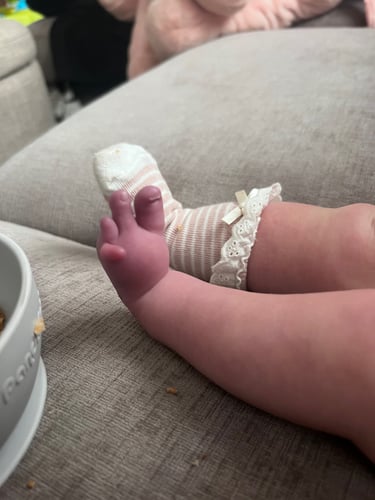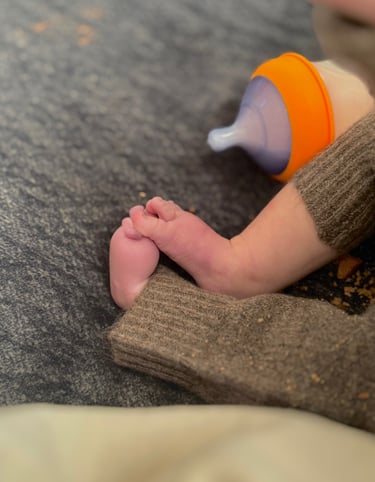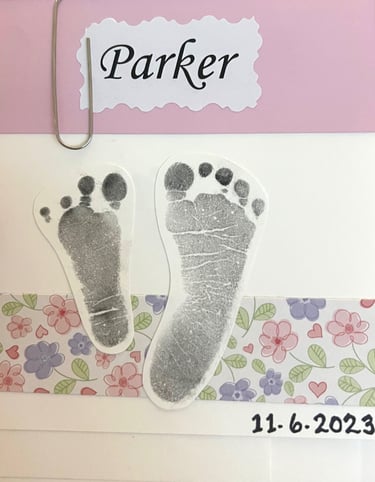What is Fibular Hemimelia?
Our journey of being diagnosed and learning to cope.
PARKER
Fibular Hemimelia is the first diagnosis Parker ever received. I will never forget this day. It was our first appointment at our Maternal Fetal Medicine. Laying in the dark room with my mom and my sister, fearing my daughter had Microcephaly. I, of course, had spent entirely too much time on google researching the condition and filling myself with anxiety. I could tell something was off, as the sonogram technician kept circling back to the same area, but at that point, I had no idea what I was looking at. After what felt like 10 years, the Doctor finally came in to talk with us.
“The great news is, Parker doesn’t have microcephaly,” I exhaled finally, feeling relieved. She continued cautiously, “However, we do see something on her left leg.” She began explaining that Parker was missing the fibula in her left leg. I had no idea that could even happen. She told us that from what she could tell, her left foot appeared clubbed or malformed, and she couldn’t identify any toes. She left the room with informing us that amputation is the most common treatment plan, depending on severity, but we wouldn’t really know until she was delivered, then told us to meet her at the front when we were ready. A friend of my mom had joined us at that point— as she had come to sit and pray over the appointment. I had held myself together decently as our Doctor walked us through what she was seeing, but as she left the room and my sister grabbed my hand, all I could do was sob. My mom, our friend, and my sister gathered around me, and our friend began praying. I couldn’t tell you what she prayed even if my life depended on it. I was so overwhelmed, scared, and felt like the rug had been pulled out from underneath me. But I do remember feeling so surrounded in love, despite the fear.
See, the scary thing about Fibular Hemimelia is that nobody knows where it comes from, why it happens, and how to prevent it. When your child is given that diagnosis, or it’s sister diagnosis, Tibular Hemimelia (the absence of the Tibia), and commonly, bilateral Fibular or Tibular Hemimelia (occurring in both legs), you unlock about 10 new doctors to find the right treatment. Essentially, you’re given two options: Amputation or Reconstruction and lengthening surgeries. My husband and I spent over a year on our knees praying for guidance on what to do for our tiny girl.
Each week that we had a sonogram, my mom and I tried to see if we could count her toes. Most weeks we wouldn’t even be able to see her left foot because she liked to keep it hidden. It’s like she knew I desperately wanted to see it, but she refused. This was just a tiny glimpse at Parker’s strong and sassy attitude I’d soon learn to love. Once we met Parker made her debut, we found that she had three full toes and one lucky toe. Her lucky toe was only connected by cartilage and was about 1/4 of the size. To this day, I love that tiny toe more than I would have ever imagined.
Neither option is even relatively good. Amputation is obviously harsh, scary, and feels so wrong in every way. All I could think to myself was “I can’t cut my child’s leg off.” But then, we researched lengthening and reconstruction in cases similar to hers. If you don’t ever have to google those images, don’t. She would be having invasive surgeries on her leg from the age of one, until at least age 12, probably longer. She’d be wearing a halo around her leg that is attached to her bones via screws, and honestly, have no ability to walk, stand, run, or be a child. I can promise you, we battled, going back and forth, until finally coming to the decision that amputation, was unfortunately, the best choice for our family.
On November 21, 2024, Parker underwent her amputation at Scottish Rite Orthopedic Hospital. She has since recovered better than we ever thought.
Fibular Hemimelia is an extremely rare condition, occurring in only 1 in every 40,000 births (Paley Orthopedic). It is not caused by genetics, and has shown that it can not be transmitted to other generations. It is not caused by anything the mother has done.






